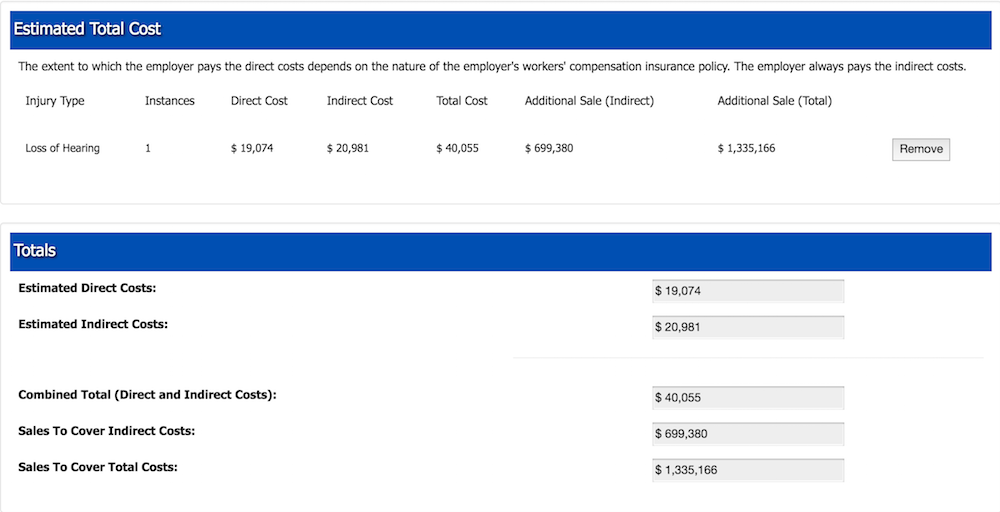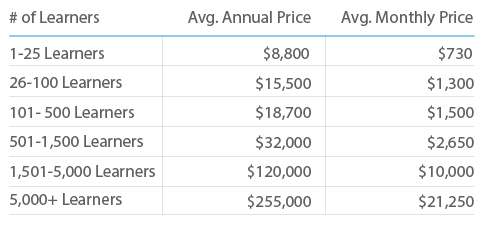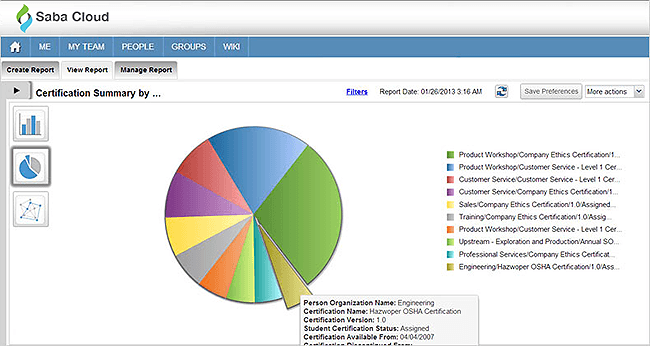Filling the 5 Biggest Gaps in Your LMS Business Case
Your average corporate trainer has to rely on makeshift course materials, disparate spreadsheets and minor administrative miracles to train your organization’s unengaged employees. If you count yourself among these unfortunates, you’re probably convinced that a new learning management system (LMS) is a worthwhile investment.
A large majority of current learning management system users agreed that it’s a worthwhile investment when we surveyed them.
Your CFO, however, isn’t so convinced. Neither is the rest of the executive board at your company that likely has some say in the final decision.
When making your business case for a learning management system to these decision makers, it’s tempting to focus on all the benefits of a new system: the individualized learning experience paths, the advanced reporting capabilities, the ability to generate user-generated content. In other words, the LMS features you are excited to sink your teeth into.
You won’t get anywhere, though, unless your LMS business case crafts a careful persuasion to relieve their biggest concerns.
In this article, we look at five common arguments a CFO or other executive might present against investing in an LMS—and advice on how you can counter each one.
Here are the arguments we’ll address:
1. “We don’t need an LMS. We’re training employees just fine without one.”
3. “The ROI isn’t clear. I’m not sure how this will benefit our bottom line.”
4. “We don’t have enough IT resources to dedicate to an LMS.”
5. “This seems like more of a ‘down the road’ opportunity.”
1. “We don’t need an LMS. We’re training employees just fine without one.”
Why they have a point: Despite the importance you and your team place on investing in an LMS, it’s hard to ignore the fact that your company has survived, and likely thrived, to this point without one. Unless you suffer from serious training gaps that are causing deficiencies in your products and services, a new LMS is probably more of a “nice to have” than a “need to have.”
How you can counter: If you work in a regulatory-heavy industry such as health care, manufacturing or banking, an LMS might be more necessary than your executives think. If a needed certification or safety training course slips through the cracks, your company’s workers could be at risk to do major harm. Should something happen, you can bet their lack of proper training will come up in very, very costly litigation or arbitration.
Positioning an LMS as a form of insurance to assure your employees are compliant can be very persuasive.
OSHA even provides a neat tool you can use called “$afety Pays.” The tool lets you input your company’s profit margin and a type of illness or injury to get an estimate of the amount of sales you would need to cover those costs.
With a 3 percent profit margin, for example, one employee’s hearing loss due to an avoidable accident would need an estimated $1.5 million in additional sales to cover the direct and indirect costs:

Source: OSHA
If compliance isn’t an issue in your organization, Courtney Vital, chief learning officer for the Human Capital Institute, recommends making a case that an LMS is a vital medium to stay ahead in a rapidly changing business environment.

“Organizations today need effective ways for employees to engage, build skills and competence and share knowledge to keep pace with the rate of change and availability of information in today’s work environments. An LMS can be the ideal hub to support this new world of learning.”
Courtney Vital, chief learning officer for the Human Capital Institute
2. “An LMS is too expensive.”
Why they have a point: Between system implementation and customization, license costs, maintenance and more, LMS platforms don’t come cheap. Software advisory firm Capterra found that organizations spend an average of $70,600 on their LMS annually:

Source: Capterra
Even so-called “free” LMSs like Moodle come with a significant IT investment.
How you can counter: Executives are naturally going to focus on the hefty price tag associated with a new LMS. It’s their job. On the other hand, it’s your job to point out all of the line-item savings a new system can bring. This includes the benefits of upgrading from manual methods and the fact that overall training costs will decrease over time.
“By implementing a comprehensive platform to deliver, manage and track learning activities, it’s possible that you could save money by reducing administration costs associated with managing training or by enabling the organization to offer lower cost e-learning option,” Vital says.
Get creative and consider all angles and affected users. Depending on the scale and complexity of your current training operations, cost savings can come from any or all of the following areas:
Lower instructor fees and salaries
Eliminating the need for travel, training facilities and physical training materials
More efficient creation, duplication and storage of course content
Workers spending less time away from their job when they train
Increased engagement and learning opportunities leading to better employee retention and less turnover
Reduced financial risk tied to better meeting industry compliance standards
Scheduling, enrollment and administration efficiencies
If you think executives will still be hung up on numbers for the initial investment and have access to budgets, you can also use this time to present ideas on where the funding for a new system can come from to alleviate concerns.
3. “The ROI isn’t clear. I’m not sure how this will benefit our bottom line.”
Why they have a point: The line connecting LMS usage with things such as improved learning content organization, employee engagement and training efficiency is pretty clear.
Less clear is how an LMS will impact where it matters most to the people in charge: in areas such as worker productivity, business requirements, revenue, and profit. They’re wondering how this expensive system can make them money in the long run, and you may not have a good enough answer.
How you can counter: Because an LMS doesn’t directly impact areas where your business makes money, simply citing stats like “42 percent of companies say that e-learning has led to an increase in revenue” in your business case and calling it a day is going to appear deceitful or disingenuous.
Instead, you need to craft a story where improvement in one area leads to improvement in another, which affects another like falling dominoes, eventually leading to that sought after bump in the bottom line.
Take a look at the state of your training program today:
How long does it take employees to do a standard training course?
How many pass final assessments, and how many fail?
How much knowledge is being retained over time?
Do employees like training or find the learning experience tedious?
Are they more productive or efficient as a result?
Once you have metrics and anecdotes on the current state of affairs at your organization, you can point to where LMS features can directly improve those areas.
If your training processes are in such disarray that you can’t even measure where you are, this could actually help your business case too. You can argue that an LMS with advanced analytics would provide much-needed insight into areas where you can improve and achieve a better ROI.
“By choosing a robust LMS that has robust analytics and dashboards, administrators can quickly and more effectively measure the impact of learning initiatives on employee performance and engagement,” Ben Willis, vice president of product at Saba Software, says. “Corporate trainers can then prove to the C-suite the tangible business value and employee impact of their training programs.”


Certification summary in Saba
4. “We don’t have enough IT resources to dedicate to an LMS.”
Why they have a point: Dedicated IT resources in your company, of both the skill and system varieties, are as limited and precious as (https://en.wikipedia.org/wiki/Melange(fictionaldrug)). Why should your company’s executive board hand you the engineers and hardware an LMS requires when the six to 12 weeks needed for implementation, combined with time for ongoing maintenance and configuration, could be used toward more revenue-generating activities?
How you can counter: Because it’s an enterprise-wide system (or even an extended enterprise LMS) often meant for large organizations, your company’s decision makers might assume that an LMS will require an IT-intensive on-premise deployment. That’s not true.
According to Gartner’s Market Guide for Corporate Learning (available for Gartner clients), less than 10 percent of LMS buyers require an on-premise deployment. Recognizing this, corporate learning vendors have expanded their cloud-based offerings:
“The push in the past five to 10 years has been to replace on-premises LMS systems with cloud-based alternatives…Most of the North American market has already shifted to cloud for learning technologies, and we have seen growing demand in Western Europe and APAC.”
Gartner’s Market Guide for Corporate Learning
This is a good thing if you’re strapped for IT resources, as a cloud-based deployment doesn’t require costly server setup and maintenance on your end—something you should stress in your business case wherever possible.
Depending on the resources your vendor of choice has on hand, you might not even need your company’s IT team to be involved at all. According to consultancy Talented Learning, LMS implementation and support services can range from free self-service offerings with video tutorials for basic LMS features and out-of-box API integrations all the way up to $75,000+ full service offerings with an assigned product team to do on-site workshops, custom integrations, content migration and more.
Vital says organizations also have time on their side. There is no rush to rollout every LMS capability all at once, so you can add things as IT resources become available.
“Starting small and taking the opportunity to learn from your users allows you to enhance functionality and capability over time,” Vital says.
Figure out your LMS use cases and customization needs, conservatively calculate how many man hours it would take to support your LMS internally then talk to your shortlist of vendors to see how much their services would cover. Present both options in your business case to not only show an apples-to-apples cost comparison, but to also weigh the pros and cons of each.
5. “This seems like more of a ‘down the road’ opportunity.”
Why they have a point: The decision makers at your company have finally given the thumbs up to investing in learning…but at a later time. There’s no rush. Things are going well after all, and implementing a digital training platform that will be used by your entire organization represents big change. Now is not the time to be rocking the boat.
How you can counter: Look out at the U.S. labor economy heading into 2020, and you’ll find an increasingly dire situation for employers and recruiters:
The number of job openings in the U.S. continues to rise
The unemployment rate has returned to pre-recession levels
10,000 baby boomer generation workers reach retirement age every day
The average cost-per-hire has increased to over $4,000
It is getting harder and harder to find, recruit and hire skilled labor and leadership from the outside. As a result, businesses need to shift their priorities from acquiring new talent to developing a learning experience for current talent if they want to succeed.
In order to do that, your company needs to act today, not tomorrow. Your LMS business case should end with a call to action to invest now so your company can reap the benefits as competitors struggle in the future.

“Every day that goes by without an LMS is a day that the organization isn’t optimizing their greatest asset—their people. An LMS acts as a foundation by giving employees easy, straightforward access to the information they need to do their jobs effectively, acquire new skills and competencies, set and achieve goals, and grow their careers. This, in turn, ultimately helps organizations achieve their strategic business priorities and drive better business performance.”
Ben Willis, vice president of product, Saba Software
Even if you’ve crafted the perfect argument, there’s no guarantee that upper management will sign off on a new LMS. You may just catch them on a bad day. But if you discover new areas of weakness in your case, build support and keep pushing, you will eventually get the greenlight you’ve been waiting for.
Start building your case today by crafting a shortlist of best fit systems and downloading our LMS Pricing Guide, which features pricing information for a number of popular LMS software programs for computers and mobile devices, to help you while selecting an LMS.